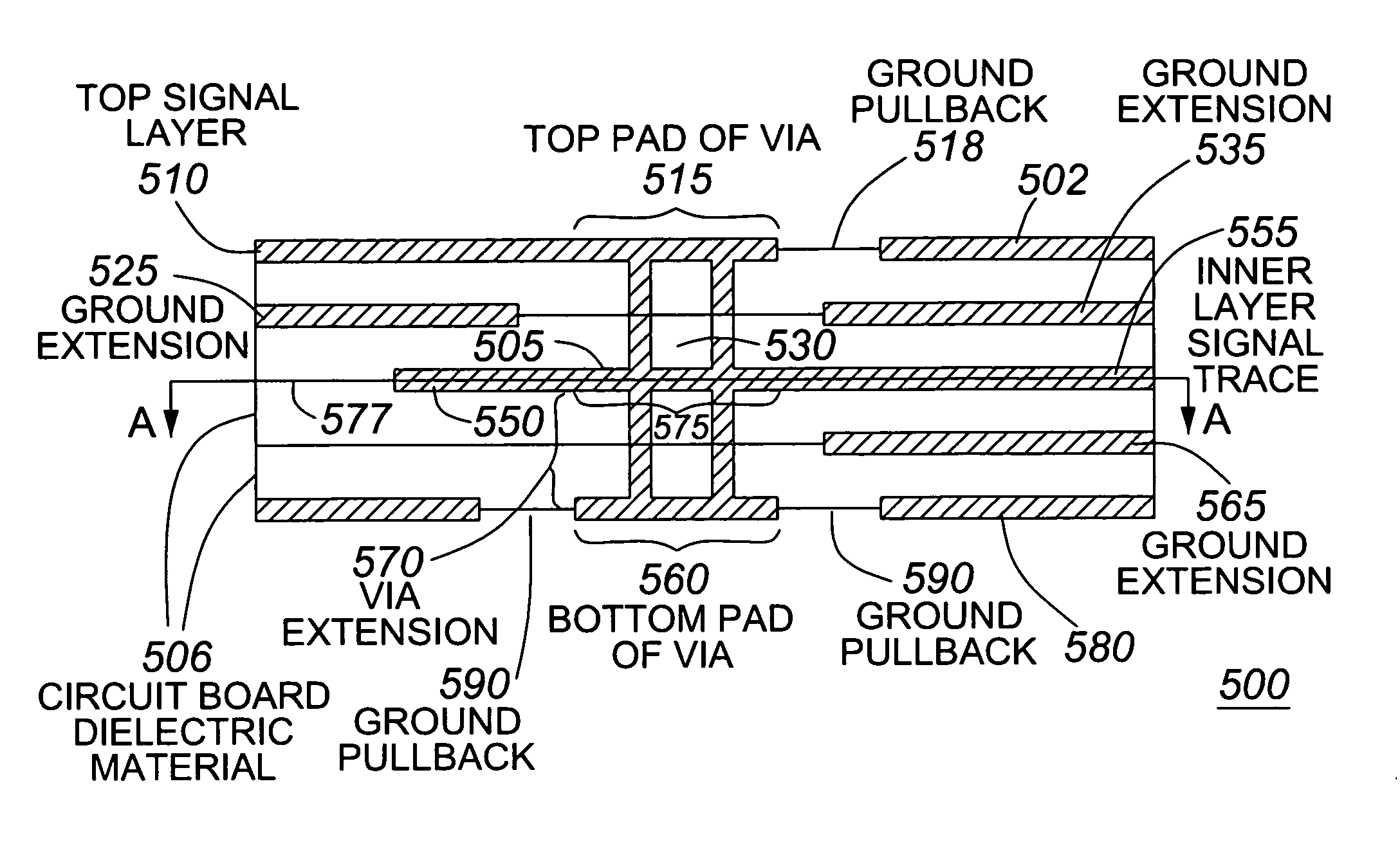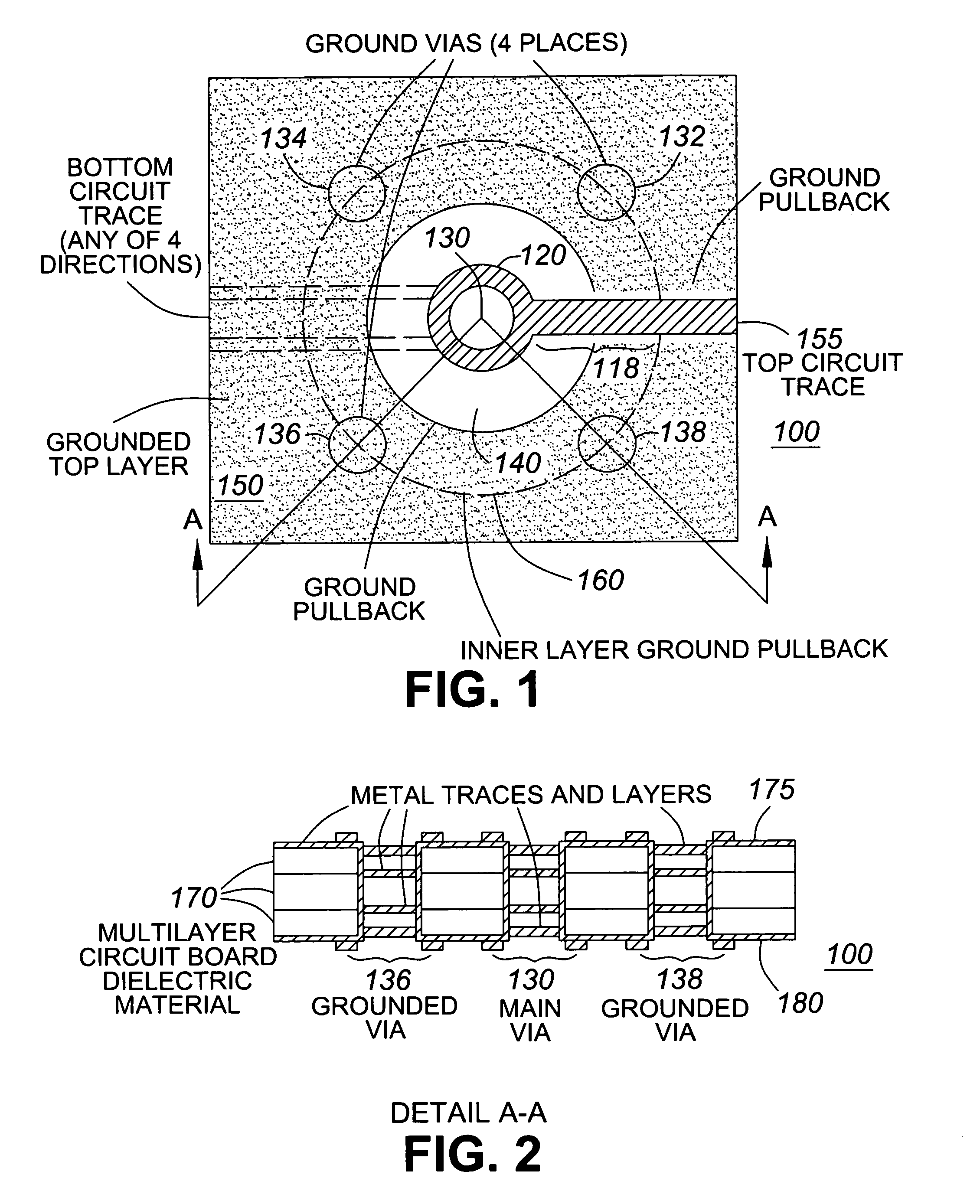Radio frequency (RF) circuit board topology
a radio frequency and circuit board technology, applied in waveguides, high frequency circuit adaptations, instruments, etc., can solve the problems of increasing complexity increasing the size of printed circuit boards, chip levels continue to decrease, and design engineers today face more and more challenges, so as to ease the congestion of routing signal traces and mitigate the effect of impedance discontinuities
- Summary
- Abstract
- Description
- Claims
- Application Information
AI Technical Summary
Benefits of technology
Problems solved by technology
Method used
Image
Examples
Embodiment Construction
[0022]The need to move signals between various conductive layers of a printed circuit board, particularly in relation to the RF circuits used in wireless communication systems, has necessitated the creation of unique radio frequency (RF) circuit board structures to compensate for the impedance discontinuities introduced by via holes. Specifically, to generate a low reflection interface, it is necessary to compensate for the non-ideal circuit effects introduced at signal trace-to-via transition regions.
[0023]In keeping with standard transmission line theory, those skilled in the art will appreciate that, for distributed lines, the impedance per unit length is given as the square root of the ratio of the inductance per unit length divided by the capacitance per unit length (i.e. √{square root over (L / C)}). Since a standard signal conductor via has an inherent inductance per unit length, introducing a distributed capacitance per unit length will provide for a uniform impedance along th...
PUM
 Login to View More
Login to View More Abstract
Description
Claims
Application Information
 Login to View More
Login to View More - R&D
- Intellectual Property
- Life Sciences
- Materials
- Tech Scout
- Unparalleled Data Quality
- Higher Quality Content
- 60% Fewer Hallucinations
Browse by: Latest US Patents, China's latest patents, Technical Efficacy Thesaurus, Application Domain, Technology Topic, Popular Technical Reports.
© 2025 PatSnap. All rights reserved.Legal|Privacy policy|Modern Slavery Act Transparency Statement|Sitemap|About US| Contact US: help@patsnap.com



